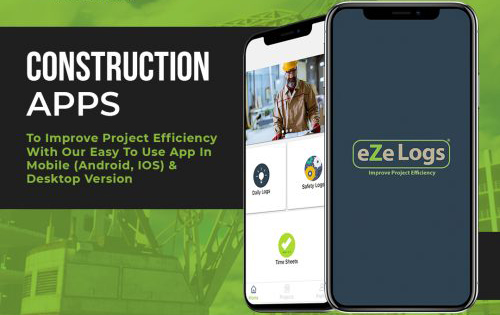The construction industry is a dynamic and complex sector that relies on accurate cost estimation to ensure projects are completed within budget and on schedule. Behind every successful construction project is the critical process of estimating, where professionals use their expertise to determine the financial requirements of a project. However, amidst the technological advancements and innovative tools that have revolutionized the construction landscape, it’s essential to recognize the pivotal role played by the human element in construction estimating.

This article delves into the significance of skills, training, and experience in the realm of construction estimating, highlighting how these components contribute to the accuracy and effectiveness of cost estimation. By understanding and appreciating the human element, we gain insights into the interconnectedness of skills, training, and experience, and how they collectively shape the foundation of successful construction estimating practices
Skills in Construction Estimating
Construction estimating is a multifaceted discipline that requires a range of skills to ensure accurate and reliable cost predictions for building projects. These skills form the bedrock upon which estimators build their expertise, enabling them to navigate the complexities of budgeting, procurement, and project planning. Here, we explore the essential skills that estimators need to excel in their roles:
1. Numerical Proficiency and Mathematical Skills:
Estimators must possess a strong foundation in mathematics to perform precise calculations, such as quantities of materials, labor costs, and overhead expenses. Mastery of arithmetic, algebra, and geometry is essential for converting project specifications into comprehensive cost estimates.
2. Attention to Detail and Precision:
Small errors in estimating can lead to significant discrepancies in project costs. Estimators need a keen eye for detail to accurately assess quantities, measurements, and specifications, ensuring that no component is overlooked or incorrectly accounted for.
3. Analytical Thinking and Problem-Solving Abilities:
Estimating often requires analyzing various project variables and making informed decisions based on incomplete or complex data. Estimators must be adept at identifying potential challenges, assessing alternatives, and adapting their estimates to changing conditions.
4. Communication Skills for Collaboration:
Effective communication is vital for estimators to work closely with project managers, architects, engineers, and other stakeholders. Estimators must convey their cost analyses and explanations clearly to ensure everyone involved understands the budgeting process.
5. Familiarity with Construction Materials and Methods:
A solid understanding of construction materials, techniques, and industry standards is crucial. Estimators need to recognize the nuances of different materials, their costs, and how they impact the overall project.
6. Computer Literacy and Proficiency in Software Tools:
Modern construction estimating relies heavily on software applications tailored for cost estimation. Estimators should be comfortable using specialized software to streamline the process, minimize errors, and enhance collaboration.
Each of these skills plays a distinct role in the construction estimating process. Numerical proficiency ensures accurate calculations, attention to detail guarantees precision, and analytical thinking allows for effective problem-solving. Communication skills facilitate collaboration, while familiarity with construction practices ensures informed decision-making. Lastly, computer literacy empowers estimators to leverage technology for more efficient and accurate estimations.
In the ever-evolving construction landscape, these skills are not only valuable but also adaptable. As technology continues to shape the industry, estimators must embrace new tools and methodologies while grounding their practices in these foundational skills. The synergy of these skills not only produces accurate estimates but also contributes to the overall success of construction projects.
Training for Construction Estimating
Construction estimating is a specialized field that demands a blend of theoretical knowledge and practical expertise. While innate skills provide a strong foundation, formal education and training play a pivotal role in shaping estimators into adept professionals. Let’s delve into the importance of training in construction estimating and explore the avenues through which individuals can acquire the necessary knowledge and skills:
1. Formal Education and Degrees: Pursuing a degree in construction management, civil engineering, or related fields provides a comprehensive understanding of construction processes, materials, and project management. These programs offer courses in estimating, cost control, and project scheduling, equipping students with a well-rounded skill set.
2. Specialized Training Programs: Numerous institutions and organizations offer specialized training programs focused solely on construction estimating. These intensive courses delve deep into the intricacies of estimating methodologies, software applications, and industry best practices. These programs cater to both beginners seeking an entry point and experienced professionals aiming to refine their skills.
3. Certification from Professional Organizations: Certifications from reputable organizations, such as the American Society of Professional Estimators (ASPE) and the Association for the Advancement of Cost Engineering (AACE) International, validate an estimator’s expertise. These certifications often require passing exams that cover various aspects of estimating, demonstrating a high level of competency.
4. On-the-Job Training and Mentorship: Hands-on experience is a valuable teacher in construction estimating. New estimators benefit immensely from working alongside experienced colleagues who can provide guidance, share insights, and offer practical tips. Mentorship accelerates the learning curve and imparts real-world wisdom.
5. Continuous Learning and Professional Development: The construction industry is ever-evolving, with new technologies and methodologies regularly entering the scene. Estimators should engage in continuous learning to stay abreast of industry trends, software updates, and emerging best practices. Seminars, workshops, webinars, and online courses are excellent platforms for ongoing education.
Training in construction estimating not only imparts technical know-how but also instills a deep understanding of the industry’s intricacies. It equips estimators with the ability to decipher project blueprints, navigate complex data, and make informed decisions. Additionally, training fosters a mindset of adaptability, enabling estimators to effectively respond to changing project dynamics and evolving industry standards.
As construction estimating software and tools become increasingly sophisticated, formal training becomes indispensable. The synergy between formal education, specialized training, on-the-job experience, and continuous learning cultivates estimators who are well-prepared to tackle the challenges of construction estimating in a rapidly evolving environment.
Experience’s Impact on Construction Estimating
Experience is a cornerstone in the world of construction estimating, bringing depth and insight that no amount of formal education can replace. From fine-tuning estimations to navigating unforeseen challenges, the lessons learned through practical involvement in projects contribute significantly to an estimator’s proficiency. Here, we delve into the profound impact of experience on construction estimating:

1. Refinement of Estimating Techniques:
Hands-on experience exposes estimators to a diverse range of projects, each with its unique intricacies. Over time, estimators develop a repertoire of techniques and shortcuts that enhance efficiency and accuracy. This intuitive understanding of estimating methodologies becomes invaluable when dealing with complex projects and tight deadlines.
2. Real-World Awareness of Project Variables:
Estimating isn’t just about crunching numbers; it’s about comprehending the real-world variables that can impact a project’s cost. Experienced estimators have encountered various scenarios, enabling them to anticipate challenges such as material shortages, labor fluctuations, and unforeseen site conditions. This anticipatory insight helps create more realistic estimates.
3. Adaptation to Changing Circumstances:
Experience hones an estimator’s ability to adapt swiftly to changing circumstances. As projects evolve, estimators draw on their past encounters to recalibrate estimates in response to alterations in design, scope, or market conditions. This agility prevents estimates from becoming obsolete and ensures projects stay within budget.
4. Enhanced Accuracy through Learning from Mistakes:
Experienced estimators have likely encountered their fair share of estimation errors. These mistakes serve as invaluable learning opportunities. The memory of past errors encourages careful scrutiny of project details, fostering a mindset of continuous improvement and a dedication to avoiding similar pitfalls.
5. Mentorship and Knowledge Sharing:
Experienced estimators often assume mentorship roles, guiding less experienced colleagues through challenges and decision-making processes. This culture of knowledge sharing enhances the collective proficiency of estimation teams and contributes to a thriving learning environment.
6. Improved Risk Management:
Navigating the uncertainties inherent in construction projects becomes more intuitive with experience. Seasoned estimators excel in identifying potential risks and devising proactive mitigation strategies. This skill proves crucial in minimizing costly surprises during project execution.
The impact of experience extends beyond the realm of numbers and calculations. It encompasses a nuanced understanding of the industry’s nuances, a heightened ability to collaborate effectively with diverse stakeholders, and the confidence to make informed decisions. While formal training imparts foundational knowledge, experience transforms that knowledge into actionable expertise that guides estimators through the intricacies of real-world projects.
Ultimately, experience is an asset that cultivates a deep appreciation for the intricacies of construction estimating. It molds estimators into individuals who not only understand the science of cost estimation but also the art of balancing accuracy, feasibility, and project success.
The Symbiotic Relationship: Skills, Training, and Experience
In the realm of construction estimating, the symbiotic relationship between skills, training, and experience creates a robust foundation for success. These three elements are not isolated factors but rather interconnected components that reinforce and amplify each other. Let’s explore how this interplay enriches the capabilities of estimators and elevates the quality of their work:
1. Skills as the Cornerstone:
Skills serve as the initial building blocks for an estimator’s proficiency. Strong numerical abilities, attention to detail, analytical thinking, and effective communication form the bedrock upon which estimators develop their expertise. These skills provide the framework for accurate calculations, precise analysis, and clear communication of cost estimates to stakeholders.
2. Training as the Refinement:
Formal education and specialized training programs refine the inherent skills of estimators. Training introduces them to industry best practices, advanced estimation techniques, and the latest software tools. This refinement enhances their ability to leverage skills effectively and accelerates their journey toward mastery.
3. Experience as the Catalyst:
Experience acts as a catalyst that transforms theoretical knowledge into practical wisdom. Through hands-on involvement in projects, estimators gain insights that cannot be replicated through training alone. Experience exposes them to a plethora of project scenarios, enabling them to fine-tune techniques, anticipate challenges, and develop a nuanced understanding of project variables.
4. The Skillful Application of Experience:
Experienced estimators leverage their accumulated knowledge and lessons learned to navigate complex project landscapes. They draw on past experiences to make informed decisions, identify potential risks, and adapt estimates in real-time to changing circumstances. This application of experience enhances accuracy and equips estimators to deliver reliable cost predictions.
5. Training Enriched by Experience:
Experienced estimators bring real-world context to training programs and certification courses. Their practical anecdotes and insights contribute to a dynamic learning environment, bridging the gap between theoretical concepts and on-the-ground application. This enrichment elevates the training experience and imparts a well-rounded understanding of construction estimating.
6. Continuous Cycle of Growth:
The relationship between skills, training, and experience is not static; it’s a continuous cycle of growth. As estimators gain experience, they can identify areas where further skills development or specialized training is needed. Likewise, new training inputs enhance skills, which are then honed and expanded through practical experience.
In essence, the synergy between skills, training, and experience transforms estimators into well-rounded professionals capable of navigating the complexities of construction estimating with finesse. This symbiotic relationship ensures that estimators are equipped to handle the ever-evolving demands of the construction industry. As technology advances and project requirements evolve, this triad of factors positions estimators to be adaptable, innovative, and reliable contributors to the success of construction projects. Just as a three-legged stool stands firm, the combination of skills, training, and experience provides stability and excellence in the world of construction estimating.
Challenges and Future Trends
As construction estimating evolves, new challenges and trends emerge that shape the landscape of the industry. Navigating these changes requires adaptability and a keen awareness of emerging practices. Let’s explore the primary challenges and future trends in construction estimating:
Challenges:
- Technological Advancements: While technology streamlines the estimating process, staying updated on the latest software and tools can be challenging. Estimators need continuous training to leverage these advancements effectively.
- Dynamic Project Requirements: The ever-changing scope of projects demands estimators to quickly adjust estimates in response to design alterations and fluctuating client needs.
- Market Dynamics: Economic fluctuations impact material prices and labor costs, making it challenging to predict accurate estimates in an unpredictable market.
Future Trends:
- AI and Machine Learning: The integration of artificial intelligence and machine learning enhances accuracy by analyzing historical data to predict future costs and project outcomes.
- Virtual and Augmented Reality: Estimators can leverage virtual and augmented reality technologies to visualize projects, improving understanding and communication among stakeholders.
- Remote Collaboration Tools: The rise of remote work necessitates efficient collaboration tools that enable estimators to work seamlessly across different locations and time zones.
Embracing these trends while addressing the challenges demands a proactive approach. Construction estimators who stay informed, continually upskill, and leverage technology will thrive in an industry that is ever-evolving.
Final Thoughts
In the intricate realm of construction estimating, the interplay of skills, training, and experience forms an unbreakable triad that underpins success. Estimators equipped with strong numerical acumen, precise attention to detail, and effective communication skills lay the groundwork. Formal training refines these abilities, while practical experience imparts wisdom that transcends theory. This symbiotic relationship creates estimators capable of navigating challenges, adapting to changing landscapes, and delivering accurate predictions. As technology and project dynamics continue to evolve, estimators who embrace this synergy will stand as pillars of reliability and innovation in the construction industry.


